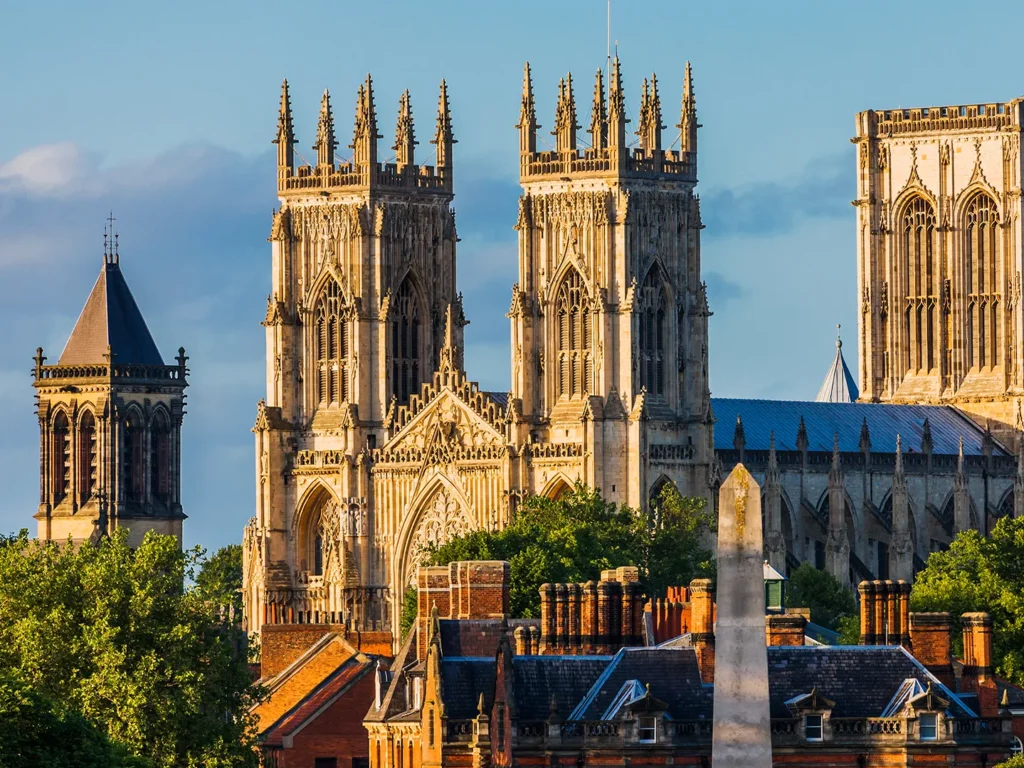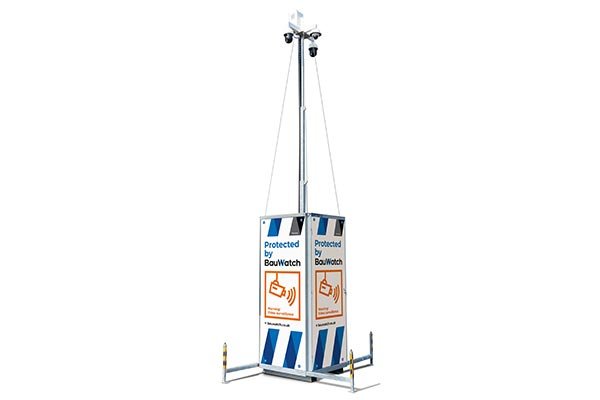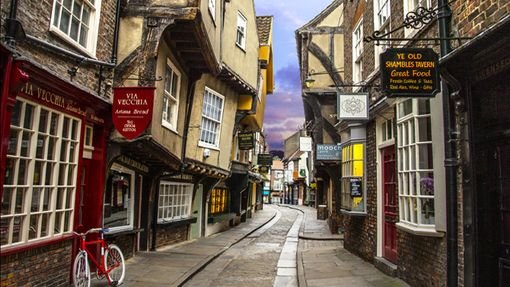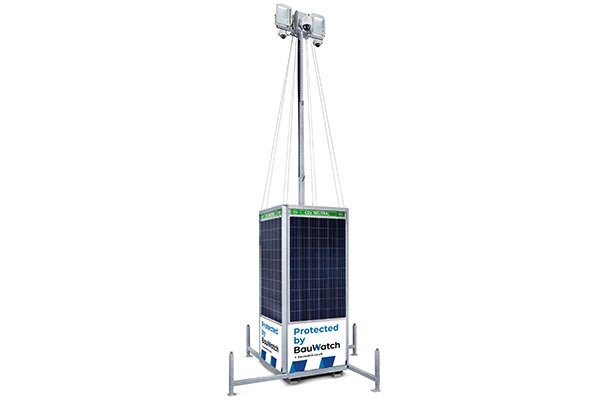
Secure your premises, Call or Text on: 01904373134
Local Business
No Call Out Fee
(See us on facebook)

CCTV TOWERS YORK

A closed-circuit television, abbreviated as CCTV, is a modern arrangement of surveillance cameras. The system includes one or many video cameras that record footage and transmit signals to an observation unit. Unlike broadcast television, which openly transmits video signals, CCTV is a closed-loop mechanism, wherein everything broadcasted remains in-house. Likewise, CCTV footage is only sent to a specific location and it is usually used for surveillance purposes. It is noteworthy to mention that evidence from a CCTV camera can be legally used in court. Thus, CCTV cameras and CCTV Towers York serve as a deterrent to crime.

We can trace the origin of CCTV systems to 1920s Russia, and they gradually made their way into the United Kingdom by 1960. Currently, there is approximately one CCTV system for every 32 persons in the United Kingdom. Various reasons, such as the growing need for safety and protection, have escalated the usage of CCTV systems in recent times. The increasing popularity of CCTVs means that you can now find CCTV mechanisms that can be installed at home or just with a little extra help. In this blog, we will look at the various ways of properly installing and setting up a CCTV system under the CCTV Towers York. So, without further ado, let us dive in!

Components of a CCTV System
Before delving into the installation process of a CCTV system, it is essential to understand its workings and components. To begin with, a CCTV security camera is usually affixed at a strategic viewpoint, usually near the entrance of a building. Once in place, the camera invigilates a wide area and records video footage, which is then sent to either a physical storage device or to the cloud for remote storage. Then, the proprietor of the CCTV system can access and view recordings. It is also possible to watch live footage of CCTV recordings.
Usually, the quintessential CCTV system comprises seven parts, each of which is crucial for the system’s seamless function. But, of course, some components play a more critical role than others. Without further delay, let us check out the various components of a CCTV system.

- Camera
The camera is the pivotal part of the CCTV system under CCTV Tower York. Nowadays, you can find two types of CCTV cameras, which include –
- Internet Protocol (IP) Cameras – They utilize the internet to send and receive footage and are compatible with various devices. Thus, as a result, IP cameras are convenient for a range of organizations and purposes.
- Analog Cameras – They are traditional cameras that send video over cable to VCRs and DVRs. Nowadays, the exclusive usage of analog cameras in CCTV systems is becoming uncommon, but you can find hybrid cameras being leveraged.
Along the broad categorization, CCTV cameras also come in multiple configurations, some of which are mentioned below.
- Dome Cameras – They look like upside-down semi-circles. They are fairly conspicuous and can deter threats. The lenses of dome cameras are tinted to keep the orientation hidden.
- Bullet Cameras – As the name suggests, they are shaped like bullets and often come with bulkier housing for extra lens protection. Bullet cameras are more visible than dome cameras, and thus, can deter some threats.
- C-mount Cameras – They are more rugged, and thus, excellent for outdoor applications. C-mount cameras also feature detachable lenses, so that you can alternate the monitoring distance as and when required.
- Pan-tilt Zoom – They enable you to point the lens at specific objects in the camera’s field of vision.
The type of camera that a CCTV system needs depends upon the area that needs monitoring. For instance, C-mount cameras are optimal for outdoor usage, whereas dome cameras are best for indoor spaces.

- Monitoring Stations
The second component of a CCTV system under CCTV Towers York is the monitoring station. Here, operators use software-equipped computer monitors to review camera feeds. You may only need a few monitors or a whole room. The monitoring station configuration depends upon the CCTV system you own as a whole. Besides, nowadays, monitor systems are scalable, and you can easily add and remove them as per your needs.
In addition, nowadays, real-time CCTV streaming enables you to carry your monitoring station everywhere. Most modern CCTV systems co-opt applications for mobiles, laptops, and computers for added flexibility. With these apps, you can watch the live video feed, review historical footage and store video data for the future.

- Video Recorders
A video recorder processes and stores the footage from the IP cameras of a CCTV system. In the past, CCTVs used VCRs for this purpose. But, as VCR technology is obsolete, video recorders have taken their place. You can find two types of video recorders in the current market –
- Digital Video Recorder (DVR) – It records digital video to a storage device, such as an SD card or a disk drive.
- Network Video Recorders (NVR) – Most CCTV systems with IP cameras leverage Network Video Recorders (NVRs) for their easy integration and compatibility. NVRs offer all-in-one solutions and simplify the process of video surveillance for entry-level applications in a plug-and-play format. Although they are costlier, the higher price tag is worth every penny.
- Ancillary Accessories
The fourth component of a CCTV system is an amalgamation of supporting accessories, such as cables and routers, which are crucial for creating a functional system. For instance, a commercial-grade camera cable is an integral part of a CCTV system, as it connects the camera to the recording device. On the other hand, if you have selected a wireless CCTV system, then a route becomes a must. Some key pointers to remember while buying a router are –
- Your Budget – Money does matter, and it is best to streamline your finances before purchasing a router for CCTV Towers York. The good thing is that there is a router for almost every price point.
- Compatibility with Your ISP – Though most routers are compatible with any ISP, it is worthwhile to check before investing.
- Range – You should opt for a router that offers a robust connection to all the cameras on your property. If required, you can also use multiple routers or Wi-Fi extenders for comprehensive coverage.
- Wireless Protocol – It is a number that indicates the router’s throughput and range.
- Video Recording Storage Storage Devices
- Plan Your Visit to York | Visit York
The fifth component of a CCTV system is the storage hardware. In fact, it is among the most critical components of CCTV. The usual hard drives used in computers are not appropriate for CCTV systems, which mandate the storage of colossal quantities of video data. Thus, you need high-performance storage devices that facilitate the recording, storing, and replay of video footage seamlessly and sans any glitches. So, look for video storage solutions that offer data protection and accessibility.

- Power Supply
Understandably, power is critical for any CCTV system. A wired power-over-Ethernet security camera allows you to transfer power and data from a camera to a server via the same cable. While sorting the power supply, you can consider the following options –
- Power Supply Box – Most commercial security mechanisms use power supply boxes to keep all the cabling organized and sorted. Power supply boxes offer extra protection for each camera in a CCTV system and keep complexity at bay.
- Individual Transformers – CCTV systems with small coverage usually go for individual transformers to power the cameras. They are ideal for CCTV systems of residences and other smaller areas. However, if the facility requires more than a few IP cameras, opting for individual transformers can spiral into a chaotic mess.
Moreover, you also need to decide whether you would connect your CCTV system to AC or DC power. It is noteworthy to remember that 12VCD is the most typical choice for commercial facilities, whereas 24VAC is ideal for larger facilities under CCTV Towers York.

- Video Management Software
Last but not least, Video Management Software (VMS) is another crucial component of a CCTV system. It is, in fact, the linchpin to your video surveillance system. A VMS collects and stores videos from IP cameras, accumulating all the input into a single pane of glass. Thus, a VMS is a one-stop solution for managing and purveying the entire CCTV system.
You can use one interface to gather, store, and retrieve all the live and recorded footage. Thus, the complexities are reduced and you also remain in compliance with governance regulations and dictates. The VMS solutions you choose may vary depending on whether you have DVR or NVR technology. But, to ensure excellent function, it is advisable to opt for a VMS solution that seamlessly integrates with other components of your CCTV security system.
Now that we have deliberated upon the seven most crucial components of a CCTV system, it is time to delve into the crux of the topic – the installation.
A Step-by-step Guide on Installing and Setting Up a CCTV Security System
After choosing the right components for your CCTV system, you need to gear up with the installation requirements, and then hunker down.
- Gather the Gear and Tools
The first step for a seamless installation of a CCTV system under CCTV towers York is organization. Preemptive preparation always makes the installation process easier and faster. You would need the following basic gear –
Rapid Deployment Mobile CCTV Tower Hire – SafeSite Facilities
- Ladder
- Fish tape
- Screwdriver
- Screws
- Power drill
- Hammer
It is noteworthy to mention that your CCTV system will come with certain tools. However, everything you use or are familiar with could be superior in some way.
- Gauge the Camera’s Location
The second step in installing a CCTV security system is determining the right angle and location of your camera. The optimal spots are those where crime and untoward incidents can easily occur, such as the building’s back, front, and side entrances. The goals while determining camera locations should be –
- Minimize the camera’s blind spots as much as possible
- Avoid interferences from light sources
- The cameras should be close to power sources
- The cameras should be affixed at least 10 feet or so for a lucid vantage point
- You should choose the right mounting material
- Affix the Camera
The third step in installing and setting up a CCTV system is attaching the camera to the desired spot. You are likely to encounter screw holes on the camera device. Thus, the next step is to drill holes into whatever surface you want to place the camera before fixing it in place. You should also leverage any mounting gear that comes with the camera. The camera attachment depends on certain aspects, such as –
- Camera Placement
- Physical Camera Body – Some cameras are compact, whereas others are massive. For at-home installation, you should opt for a convenient and compact CCTV camera, which is easy to attach and surmount.
- Run the Wiring
In case your CCTV system comes with cables and wires, you would be requiring a good amount of fish tape. The fish tape will hold the wiring in place and prevent it from bunching, tangling, or dangling away from the walls. Besides, looking visually attractive, the step also ensures that you or anybody does not hurt themselves on the wiring. So, you would have to drill holes as and when required to maneuver the wiring through the walls. The goal is to keep everything as tight and as organized as possible until you can plug it into the power source or external storage device.

- Operate the System
Last but not least, it is time to operate your CCTV security system. You need to turn on the system and set up passwords and other personal preferences. From here onwards, you should be able to monitor and invigilate the access points of your residence or commercial building and leverage any feature that comes with your CCTV systems, such as zoom, freeze, and more.
Thus, in a nutshell, it is very much possible to set up and install CCTV systems on your own. The installation process will be easier or more complicated, depending on your experience, and the type of building you are installing the camera into. To seamlessly install a CCTV security system, you have to just gather the right gear, select the ideal location for your camera, affix the camera properly, safely run the wiring, and operate the system.
Now that we have touched upon the basics of installing a CCTV camera, let us conclude the article by examining why CCTV systems under CCTV towers York are so important.
Importance of Installing CCTV Security Systems in the UK in 2023
- Fewer Prospects of Crime
CCTV systems are a sure-shot way to deter crime and dissuade troublemakers from attempting burglary, vandalism or any other kind of untoward activity. Various studies have proven that recorded surveillance reduces crime in an area.
- Evidence Gathering
CCTV cameras also provide a way to monitor the actions or words of people during an event. You can find an array of amazing quality CCTV cameras that record crystal-clear videos and audio. Evidence accumulation via CCTV footage is especially beneficial if you are involved in any legal dispute. Besides, premises, such as brick-and-mortar stores, restaurants, etc, need recorded footage for a lot of reasons, which can be achieved by CCTV installation.

- Movement Monitoring
Another reason why CCTV installation has become imperative in the United Kingdom is because of the growing need to monitor movement and activity. When you are away from home or your business premise, any untoward incident can occur. However, by viewing real-time footage of the area in question, you can get peace of mind and remain abreast of all the happenings. Thus, prompt action also becomes possible.
- Better Decision Making
Having recorded footage of an incident or event means that your decision-making improves. Whether you are embroiled in a personal skirmish or a professional legal battle, visuals always help reach the right conclusion. Thus, having CCTV cameras installed is always a good choice.
- Record-keeping
Last but not least, installing CCTV cameras is also important, especially for businesses and enterprises, as keeping records has become the need of the hour. When there is recorded footage handy, you can always go back and check it out for future considerations and to come to the right conclusion.

Wrapping It Up
So, there we have it, a comprehensive overview of how to install and set up CCTV systems under CCTV towers York. In today’s day and age, safety is everyone’s concern. But, it is equally important to take the right action and prioritize your safety concerns to keep crude and untoward incidents at bay. Even the knowledge that your residential or commercial property has CCTV can deter criminals from making any kind of move. Moreover, the fact that you always know who is entering and leaving your property gives you peace of mind, and facilitates prompt decision-making. So, this year, take the first step towards your safety and get a CCTV system installed. The steps we have mentioned above can also help you DIY the installation process. So, it is a win-win situation!